Snake plants, scientifically known as Sansevieria, are some of the most resilient and popular houseplants, gracing homes and offices around the world with their striking architectural foliage. How much light does snake plant need to Known for their hardy nature and ability to thrive in a variety of conditions, snake plants are often the go-to choice for beginner and experienced plant enthusiasts alike.
But how much light does a snake plant actually need to flourish and maintain its vibrant appearance? In this article, we will explore the ideal lighting conditions for your snake plant, discussing the various factors that impact its growth and offering practical tips to help you provide the perfect amount of illumination for your beloved green companion.
Quick Navigation
- 1 Snake Plant Care
- 2 How Much Light Does A Snake Plant Need Daily?
- 3 Importance Of Light For Snake Plant
- 4 Signs That Your Snake Plant Is Getting Insufficient Light
- 5 What Type Of Light Does A Snake Plant Need?
- 6 Best Soil For Snake Plants
- 7 Snake Plant Benefits
- 8 Snake Plant Disadvantage
- 9 FAQ How Much Light Does The Snake Plant Need
- 9.1 How Much Artificial Light Does A Snake Plant Need?
- 9.2 What Kind Of Light Do Snake Plants Like?
- 9.3 What Temperature Is Best For Snake Plants?
- 9.4 Can A Snake Plant Survive Direct Sunlight?
- 9.5 Where Should You Place A Snake Plant Indoors?
- 9.6 How Many Hours Of Light Do Snake Plants Need?
- 9.7 How Much Light Does A Snake Plant Need Indoors?
- 9.8 Can A Snake Plant Survive In Low Light?
- 10 Conclusion
Snake Plant Care
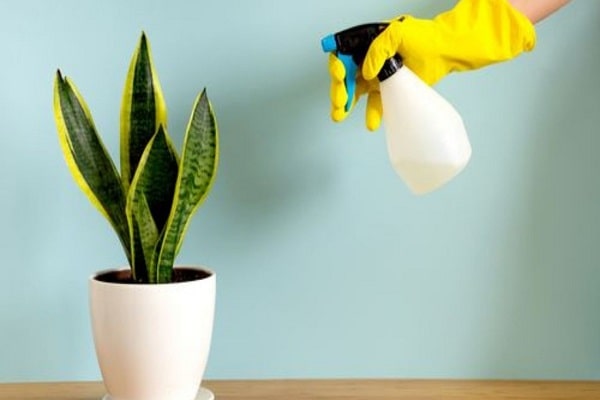
If you’re looking for a hardy, low-maintenance plant, the snake plant is a great option. Here are a few tips for caring for your snake plant:
How Much Light Does A Snake Plant Need Daily?
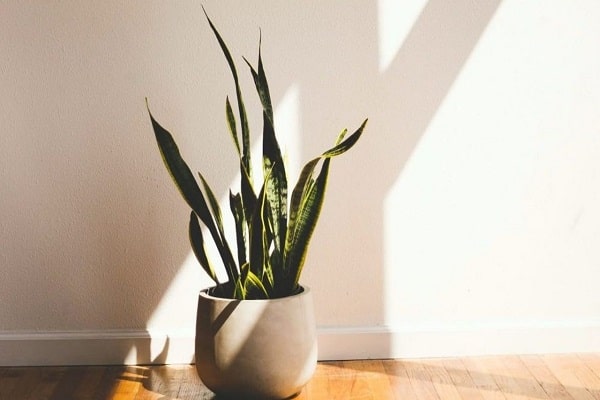
Snake plants are often considered low-maintenance houseplants, but you should know a few things about their light requirements.
First, snakes require bright light for the best growth. They need at least six hours of bright sunlight each day. If your snake plant hangs over a window, orient it to the leaves facing east or southeast to receive the most sunlight.
If you have a snake plant that doesn’t get enough light, you can try using grow lights instead. Keep the lights close to the plant and give it at least six hours of direct sunlight each day.
Importance Of Light For Snake Plant

Snake plants are one of the most popular houseplants because of their ability to grow quickly and tolerate a wide range of conditions. However, without adequate light, these plants cannot thrive.
Light is crucial for the growth and development of snake plants. They will not produce flowers or fruits without proper lighting and may die. Snake plants need bright light to germinate new roots and grow new leaves. They also need bright light to produce chlorophyll, which gives these plants their green color.
If you do not have a lot of sunlight coming in your window, try placing a north-facing window near the top of your home so that your snake plant has plenty of natural light. Alternatively, you can purchase a fluorescent plant light that will give your snake plant the same brightness level as natural sunlight.
Signs That Your Snake Plant Is Getting Insufficient Light
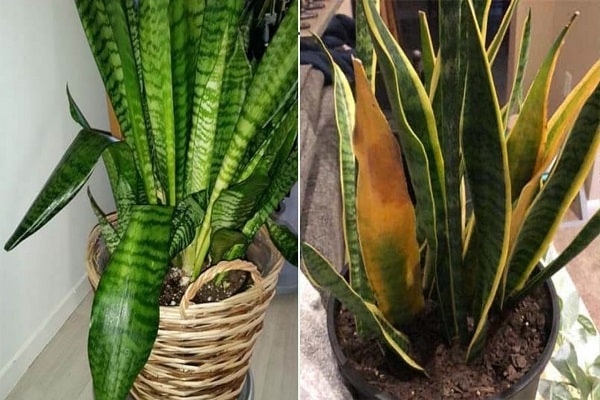
When it comes to providing your snake plant with the light and CO2 they need, you want to be sure that you are providing them with the correct amount of both. The following are some signs that your snake plant may not be getting enough light:
The leaves on your snake plant will start to thin and turn yellow, then brown. It indicates that there is not enough sunlight reaching the plant’s leaves.
If you place a ruler next to a snake plant, you will notice that the length of the stem will be much shorter than if the plant was in direct sunlight. The plant cannot generate as much energy as it can under direct sunlight in indirect light.
Another sign that a snake plant may not be getting enough light is when its leaves start to curl upwards.
What Type Of Light Does A Snake Plant Need?

The type of light a snake plant needs depends on the species. Some need bright light, while others prefer more indirect light. It’s important to give them enough light so they don’t stretch or droop, but not so much that they get too hot or burn the leaves.
Some people recommend using fluorescent lights because they’re low-energy and provide a consistent illumination level. Other people say sunlight is best because it’s natural and provides all the necessary nutrients for the plant.
Direct Light Vs. Indirect Light

Direct light is the best type of light for a snake plant because it provides the most energy and warmth to the plant.
Indirect light, the leaves will be brightly illuminated. In contrast, indirect light can still help to provide some illumination but isn’t as strong as direct light.
When selecting a snake plant, it is essential to decide whether you want a plant that needs direct or indirect light.
Snake Plant Watering
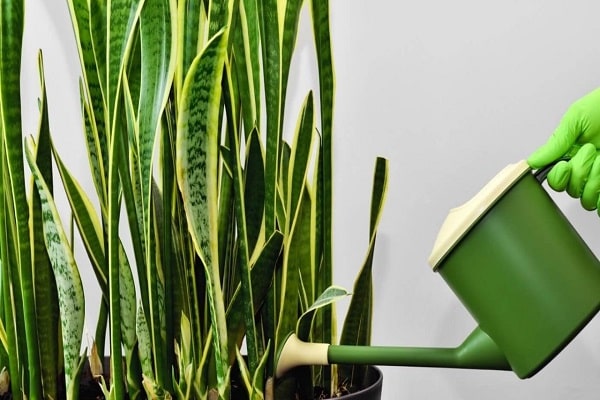
Snake plants are some of the easiest plants to care for, but there are a few things you should keep in mind when watering them.
Snake plants will do best when given about 1 inch of water per week. If your snake plant is growing slowly, give it a little more water than this; cut back on the watering if it’s growing rapidly. You can also mist your snake plant occasionally to help it stay moist.
Best Soil For Snake Plants
Snake plants (Euphorbia esula) are popular house plants because they grow quickly, tolerate low light levels, and can be kept indoors or outdoors. However, snake plants need proper soil and care to thrive like all house plants. Here are some tips for improving the soil conditions for snake plants:
Before planting, add a layer of fresh compost or spent coffee grounds to the potting mix. Snake plants prefer well-drained soil that is high in organic matter.
Never water your snake plant from the top-down – water them from the roots up instead. It will help improve drainage and prevent root rot.
Fertilize your snake plant monthly with a dilute solution of fertilizer made for houseplants – make sure to read the label first to make sure it is compatible with snakes!
Snake Plant Benefits
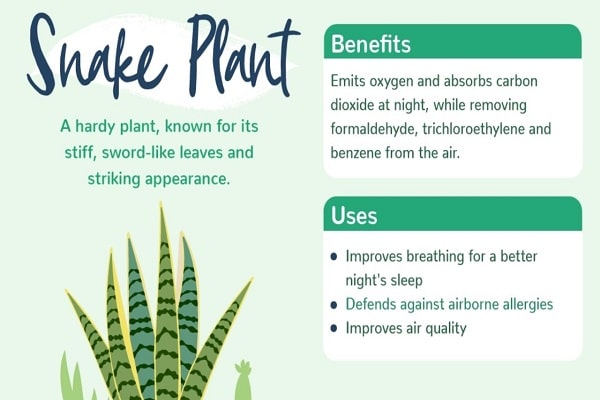
Snake plants (Echinopsis sp.) are popular houseplants because of their attractive, colorful leaves and stems. Although they are not native to North America, snake plants can be grown successfully indoors in most climates. Their popularity is likely due to the many benefits they provide. Here are five key reasons why snake plants are great houseplants:
Snake plants help clean the air by removing toxins and pollen.
They help reduce humidity levels in the home, making it more comfortable for people and pets.
They improve air circulation by trapping warm air near the floor and pushing cool air up through the plant.
Snake plants are effective at filtering out harmful UV radiation from the sun.
Their leaves can act as natural greenhouses, helping to keep rooms cooler during the summer months.
Snake Plant Disadvantage
There are a few disadvantages to owning a snake plant. One is that they can be pretty expensive. Another is that they require a lot of care and attention. If you do not provide enough water or sunlight, your snake plant will not thrive. Finally, snake plants can be toxic to pets and children if ingested, keeping them out of reach.
FAQ How Much Light Does The Snake Plant Need
How Much Artificial Light Does A Snake Plant Need?
The snake plant is a popular houseplant known for its easy care. Snake plants are native to Africa and can grow in very low light conditions. However, if you want your snake plant to thrive, it is best to give it some artificial light. A snake plant can be placed in a room with bright, indirect light or a spot that gets direct sunlight. If you are growing your snake plant in a low light area, you may need to give it some artificial light, such as a grow light, to help it thrive.
What Kind Of Light Do Snake Plants Like?
Snake plants tolerate different light levels, but they do best in bright, indirect light. If you grow your snake plant outdoors, give it some protection from the hot afternoon sun.
What Temperature Is Best For Snake Plants?
Snake plants grow best in warm, humid environments with a 60-75 degrees Fahrenheit temperature range. If the ambient temperature is below 60 degrees Fahrenheit, the snake plant may experience growth problems.
Can A Snake Plant Survive Direct Sunlight?
Yes, a snake plant can survive direct sunlight. However, the plant will likely not grow as quickly or robustly in direct sunlight as in shadier areas. Snake plants are native to sunny places and do well in direct sunlight; consider bringing a snake plant into your home if you live in a shady area.
Where Should You Place A Snake Plant Indoors?
Snake plants are excellent indoor houseplants and can be placed almost anywhere in the house. It can survive in nearly any type of lighting but do keep in mind that direct sunlight is best for them.
How Many Hours Of Light Do Snake Plants Need?
Snake plants (Echinopsis) are easy to grow plants that need very little light. Some folks like to keep them in low light conditions, while others place them near a sunny window. Snake plants will do just fine with 12 and 16 hours of light per day.
How Much Light Does A Snake Plant Need Indoors?
Indoor plants need a certain amount of light to grow and flourish. For most houseplants, around 600-900 lumens are needed per leaf. This corresponds to about a half-hour of direct sunlight per day. You may only need as little as 50-100 lumens for some plants like snake plants. If your home is poorly lit or you have a lot of artificial light, then supplemental lighting can be used to help your plant grow.
Can A Snake Plant Survive In Low Light?
Snake plants, commonly known as Mother-in-Law’s Tongue, are highly adaptable plants that can tolerate a wide range of light conditions. They can grow in bright or dim light and thrive in temperatures from -10 to +50°C. But, it is recommended that you give them a sunny spot to grow.
Conclusion
Understanding the specific lighting requirements of your snake plant is essential to ensure its healthy growth and longevity. While these hardy plants can adapt to various lighting conditions, they thrive best in bright, indirect light. It’s important to monitor your snake plant’s environment and adjust the light exposure as needed to avoid any adverse effects from excessive sunlight or inadequate illumination.
By providing the optimal lighting conditions and regularly observing your snake plant’s overall health, you can enjoy the many benefits of this versatile and low-maintenance houseplant for years to come. So, let the light shine on your Sansevieria, and watch it flourish as a testament to your attentive care.

My name is Md Deloar Hossain and I’m the creator of Club Gardening, designed for all your gardening ideas, gardening product reviews, and a place to help you find the best gardening experience possible.


